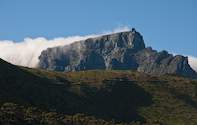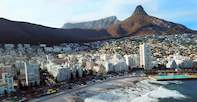Early Days
Sea Point was so named in 1776 when Sam Wallis, one of the commanders serving under Captain Cook, encamped his men there in order to avoid a smallpox epidemic, which was sweeping through Cape Town at the time.

A short period prior to this, a small society house owned by a local men’s club was established on the Sea Point slopes of Signal Hill, and provided a place of entertainment for European men, many of whom were free burghers or officials from the Dutch East India Company, and some of whom were slave-owners.
Ships entering the harbour in Table Bay from the east coast of Africa rounded the coast at Sea Point and over the years many of them have been wrecked on the reefs just off-shore.
The area began to develop as a residential suburb for European settlers in the early 1800s, and in 1839 was joined into one municipality with neighbouring Green Point. By 1813, 28 plots were sold for development on the lower slopes of Signal Hill.
20th Century Development

By the start of the 1900s, twenty-five cottages, a block of flats, and fourteen houses existed, all of which were later demolished. A park now stands where these homes once were. Though the population of Sea Point was predominantly made of white, middle-class residents, there were parts of the town where a large number of largely coloured, working-class families lived. Forced removals during the apartheid years forced residents of colour to relocate to the Cape Flats.
In 1926, the Green and Sea Point Hebrew Congregation was established, and Sea Point’s Jewish population grew dramatically. Today, Sea Point has at least three places of worship for Jewish community members.
Sea Point Contact
While tootling round the world aboard the HMS Beagle, the young naturalist Charles Darwin already had an inkling about how species might diverge over time, but he could not figure out how it could have happened in what was thought to have been earth's short lifespan (most learned people at the time thought it was a few hundred thousand years old, at most).
When his ship docked at Table Bay in 1836, Dr Andrew Smith, curator of the local museum, suggested that he should go take a look at the rocks at Sea Point's Queen's Beach. What he saw there was where lava had been extruded through layers of Malmesbury shale (the geological formation upon which Table Mountain rests), and had heated and softened it like putty to form a contorted contact zone known as migmatite.
Back on the Beagle, one of the biggest leaps Darwin made was to realise earth was much, much older than anyone suspected, and that there would indeed have been enough time for species to transmute naturally. It's called the Sea Point Contact, and a plaque on the rocks commemorates Darwin's observation of the rare geological interface.